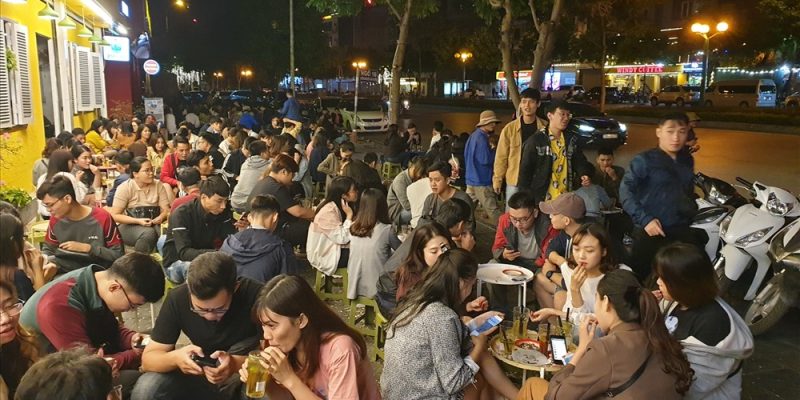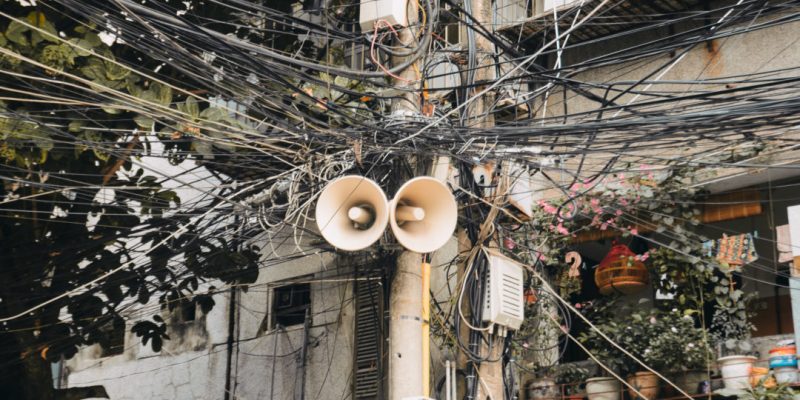
The power of Loudspeakers
Vietnam has about 10 000 loudspeakers. Yes, ten thousand. Loudspeakers are a throwback to the 1960s 1970s war years between N. Vietnam and S. Vietnam when they delivered news and warned people to get into a bomb shelter for protection against attack from the air. Nowadays, these loudspeakers still exist, blaring neighborhood announcements covering a range of topics like residential clusters meetings, avian flu prevention, healthcare information and sanitation reminders all over Vietnam through the daily 6:30 AM and 5:30 PM broadcasts in a male or female voice. They begin and end with some beautiful music sort of patriotic rhythms. If you stay in Vietnam, I am 100-percent sure the loudspeakers will wake you up in time. A handful of residents has raised their voice about being annoyed by these loudspeakers sometimes because they can hardly have a good sleep and their ears have been bombarded terribly with the noise coming out.

Early school start times
Sometimes we cannot understand why students from other countries often complain about their school start times while we always wish our schools started as late as their schools do. In Vietnam, students in primary schools have to arrive before 7:15 AM, middle schools, and high schools before 7:00 AM, and college/university before 6:45 AM. Yes, 6:45 AM which means we have to try in vain opening our eyes and step away from such loving beds before 6 to prepare for schools. If you backpack to Vietnam for a certain amount of time, long enough to immerse in the local culture, don’t push away a chance to visit any elementary schools here. You will see how Vietnamese pupils yawn cutely in early morning hours, gathering together to do physical exercises at schoolyards.
Because of its geography, the climate in Vietnam varies drastically between the north and the south. Many travellers don’t realise this and mistakenly think the weather and temperature will be uniform for their entire trip.
Generally speaking, spring (March to April) and autumn (September to early December) are the most pleasant times to visit Vietnam. It’s not too cold yet in the north, and not too hot in the south or on the coast.
Remember the weather is unpredictable and can bring anything from freezing temperatures and frequent downpours to intense heat and evening storms.
In order to pick the right season, you should first have a firm idea of where you want to travel. If you only have a specific window of time when you can travel, then you might need to adjust your itinerary based on the weather.
4. BE SELECTIVE WITH YOUR ITINERARY – DON’T TRY TO FIT TOO MUCH IN
As an advocate of slow travel I always recommend moving through a country at a steady pace – especially if it’s your first visit. You need at least three full days to do the big cities such as Hanoi and Saigon justice. Take advantage of Vietnam’s best day trips to see more of the country while using the cities as a base.
It takes time to get to know Vietnam, its culture, traditions and food – and every region is different. If you try to fit too much in and rush through, your experience might not be as fulfilling.
Another thing to keep in mind: Vietnam may look small on the map, but don’t let that deceive you. It still takes time to travel around the country, especially if you’re relying on trains and buses. Incorporating a few domestic flights is a great way to save time and see more.
5. LEARN A FEW KEY VIETNAMESE PHRASES
Vietnamese is the official language in Vietnam but English is widely spoken – especially in popular tourist areas and among the younger generations. However, if you want to have a more holistic experience and demonstrate your respect for the local culture, it’s nice to know a few basic phrases.
Even if it’s just a few words, people will appreciate that you’ve taken the time to learn some Vietnamese. It might even open doors to you that are normally closed to outsiders.
Here is a great resource for learning traveller’s Vietnamese.
6. PLAN YOUR BUDGET CAREFULLY
Don’t make the mistake of thinking everything in Vietnam is ‘cheap’. While it’s true that Vietnam is incredibly good value for money (especially when it comes to accommodation and food), there are still some things that are worth splashing out on, for example a quality Halong Bay trip from Hanoi.
Cash is still king in Vietnam, so make sure you carry plenty of dong (the official currency) with you. Street food stalls, markets, taxis and small hotels and homestays (especially in rural areas) might only accept cash.
7. PACK THE RIGHT CLOTHES
The humidity in parts of Vietnam is intense, so you need breathable clothes that you can wash and dry overnight. Natural materials such as cotton or linen are preferable. Most locals cover up in hot weather so if you want to blend in, carry a light scarf or long-sleeved throw over that you use to protect your arms from the sun.
Warm gear is absolutely essential if you’re travelling to the north in the winter months. It’s always a good idea to have a travel raincoat and umbrella with you no matter the season.
Conservative dress is required for temples and religious sites. I recommend a scarf for women and long, lightweight pants for men.
8. DON’T FORGET YOUR CAMERA!
Vietnam is nothing if not photogenic. From Hanoi’s Old Quarter to the dreamy landscapes around Dalat, it’s one beautiful landscape after the next.
Remember to be respectful when practicing street photography and always ask for permission before taking someone’s portrait. This is especially important in rural areas.






